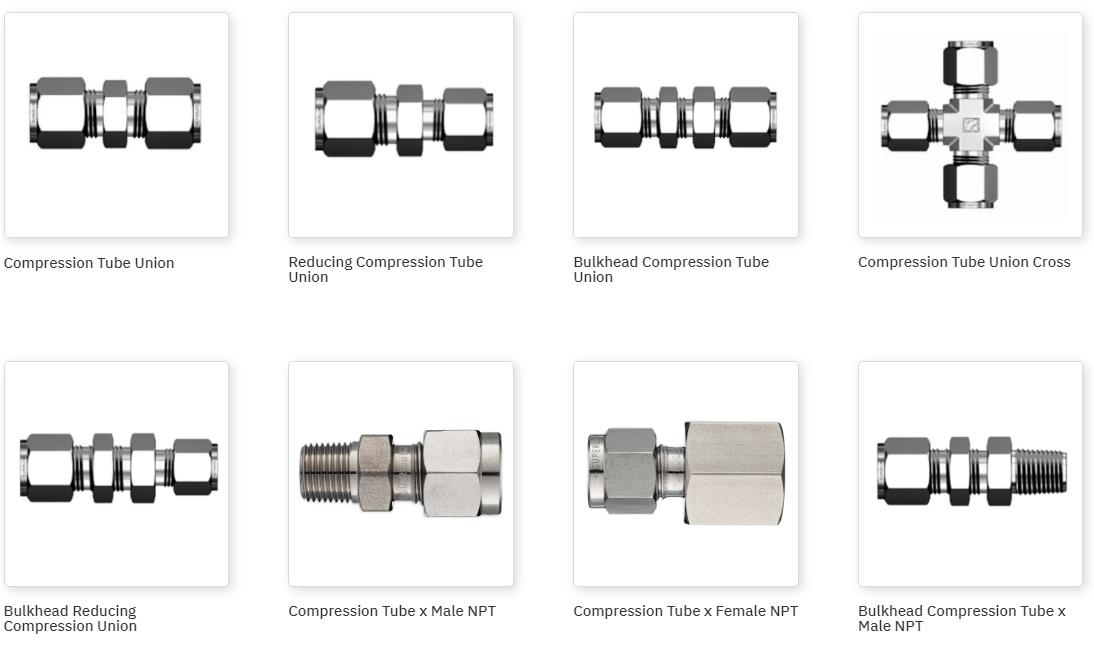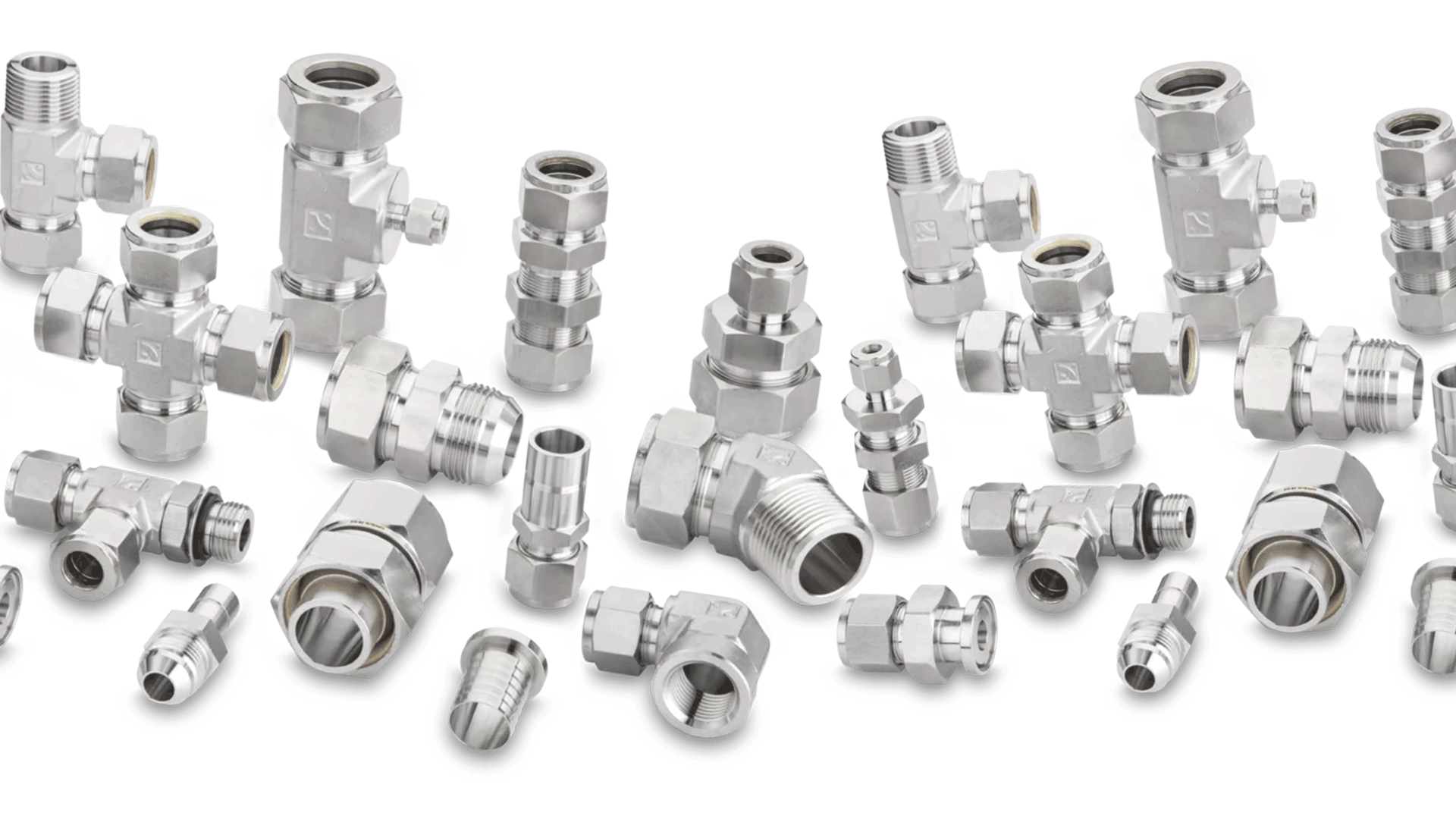In various industries, fluid and gas systems are an integral part of operations. The reliable and efficient transmission of fluids requires secure connections that can withstand high pressures and maintain leak-free operation. Compression tube fittings have emerged as a popular choice for joining tubes in these systems. This article delves into the world of compression tube fittings, exploring their functionality, benefits, applications, and considerations for implementation.

Understanding Compression Tube Fittings
Compression tube fittings are mechanical connectors used to join two tubes together, forming a leak-tight connection. They consist of three primary components: a body, a nut, and a ferrule. The body, typically made of brass or stainless steel, features a threaded interior that accommodates the nut. The nut is tightened onto the body, compressing the ferrule(s) against the tube, creating a tight seal.

Examples of Compression Tube Fittings
The Benefits of Compression Tube Fittings
- Leak Resistance: One of the key advantages of compression tube fittings is their excellent leak resistance. The compression action of the ferrule(s) creates a strong seal that prevents fluid or gas leakage, even under high-pressure conditions. This reliability is crucial in industries where safety and efficiency are paramount.
- Easy Installation: Compression fittings are relatively simple to install, requiring only basic tools. The nut and ferrule(s) can be easily tightened onto the tube without the need for soldering or welding. This feature makes compression fittings a time-saving option for installation and maintenance, reducing downtime.
- Versatility: Compression fittings offer versatility in terms of materials and tube sizes. They can be used with various materials such as copper, stainless steel, brass, and plastic. Additionally, compression fittings are available in different sizes, allowing them to be used across a wide range of applications.
- Reusability: Compression fittings can be disassembled and reassembled multiple times without compromising their performance. This reusability feature is beneficial in situations where modifications or repairs are necessary, reducing material waste and saving costs in the long run.
Applications of Compression Tube Fittings
Compression tube fittings find extensive use in numerous industries, including:
- Plumbing and HVAC: Compression fittings are commonly used in plumbing and HVAC systems to connect pipes and tubes carrying water, gas, or refrigerants. Their leak resistance and easy installation make them ideal for residential, commercial, and industrial applications.
- Automotive: Compression fittings are employed in automotive systems, such as fuel lines and brake systems. Their ability to handle high-pressure conditions and resistance to vibration and temperature variations ensure reliable operation in demanding environments.
- Industrial Processes: Compression fittings are crucial in industrial processes where fluid transmission is involved. They are commonly used in chemical plants, oil refineries, power generation facilities, and manufacturing plants for connecting pipelines and controlling fluid flow.
Considerations for Implementation
While compression tube fittings offer numerous advantages, certain considerations should be taken into account during their implementation:
- Proper Tube Preparation: The tubing ends should be cut squarely and deburred before inserting them into compression fittings. Proper preparation ensures optimal contact between the ferrule(s) and the tube, enhancing the effectiveness of the seal.
- Material Compatibility: It is crucial to consider the compatibility of the compression fitting materials with the fluids or gases being transmitted. Chemical reactions or corrosion between incompatible materials could compromise the integrity of the fitting and lead to leaks or system failures.
- System Pressure and Temperature: Compression fittings are rated for specific pressure and temperature ranges. It is important to select fittings that can withstand the intended operating conditions to ensure long-term reliability and safety.
- Proper Installation: Adequate tightening of the nut onto the body is vital to achieve a secure and leak-tight connection. Over-tightening can damage the fitting, while under-tightening may result

